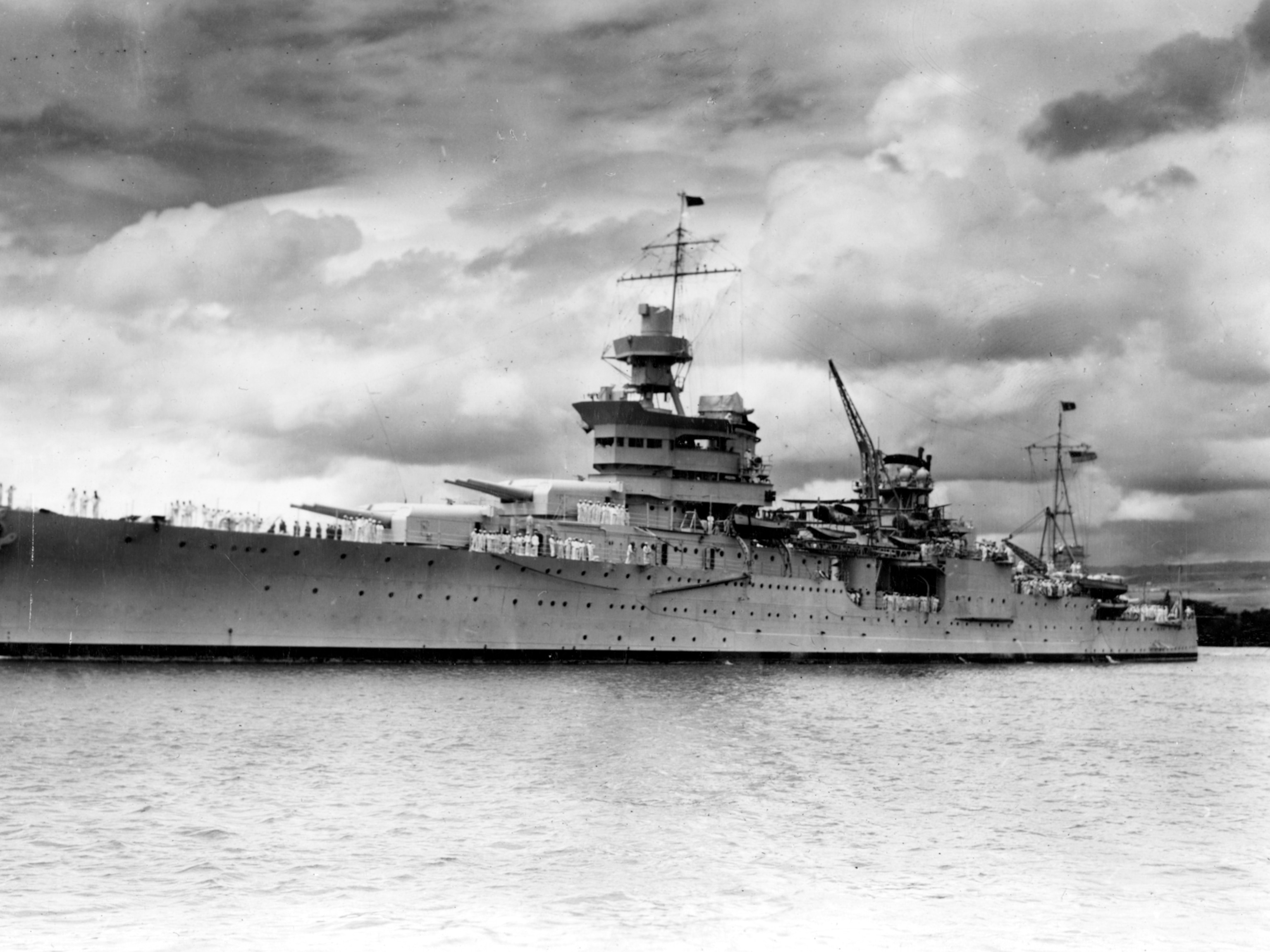Listen to Survivors Recount Warship Sinking Among Sharks
A naval disaster that killed some 900 men aboard the U.S.S. Indianapolis happened 70 years ago Thursday.
Thursday marks the 70th anniversary of the sinking of the U.S.S. Indianapolis—the maritime disaster made famous by Captain Quint’s monologue in the movie Jaws. The heavy cruiser sank in just 12 minutes after being torpedoed by a Japanese submarine shortly after midnight on July 30, 1945. Some 300 men went down with the ship, and the remainder of the crew—between 800 and 900 men—struggled for five days to survive dehydration, hypothermia, shark attacks, and madness while floating in the South Pacific. Only 317 succeeded.
In terms of lives lost, it was the U.S. Navy’s second worst catastrophe in history, trailing only the attack on Pearl Harbor. In terms of suffering and endurance, it was second to none.
Last weekend, 14 of the remaining 31 survivors gathered for a reunion in Indianapolis to commemorate the event, remember the dead, and celebrate the lives they feared they’d never have. The survivors of the U.S.S. Indianapolis have been meeting for reunions for 55 years, telling their stories to each other, their families, and whoever else cares to listen. Here is what a few of them had to say last weekend.





